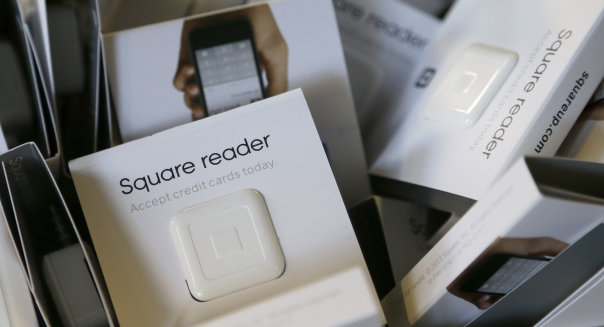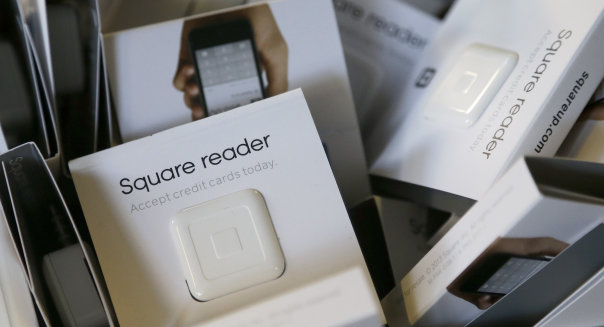
So far, 2014 has been a high-scoring year for initial public stock offerings. The first quarter saw more IPO activity than any other initial quarter since 2000, with 64 companies listing on various U.S. exchanges raising a collective $10.6 billion. That’s more than double the number of IPOs that took place in the first quarter of 2013.
This is directly related to the health of the overall stock market. Generally speaking, the better shares are performing, the higher the chance of an issuer being successful on IPO day. After all, who’s eager to buy anything when the market’s in the doldrums?
Yet even in a good environment for IPOs, companies occasionally get the jitters and withdraw their listings. Sometimes this is due to the overall atmosphere on the market; sometimes it’s because of difficulties with the issuing company itself; sometimes it’s both. Whatever the reason(s), the notable examples below scampered away before they could become publicly traded entities.
Square
One of the top anticipated IPOs of 2014 was for this cutting-edge e-commerce company, which pioneered the use of smartphone and tablet payment card readers. Then there’s Square’s impeccable geek credentials, thanks in no small part to its founder-CEO Jack Dorsey, who was one of the guiding lights behind Twitter (TWTR).
That, apparently, wasn’t enough to bring it to market. In late February, media reports had it that the company postponed its planned IPO indefinitely. It seems that it’s burning through cash very quickly and doesn’t have enough revenue to cover this.
Instead of listing on an exchange, the firm is reportedly looking for a deep-pocketed suitor and has allegedly held discussions with Google (GOOG), Apple (AAPL) and eBay (EBAY), and possibly even one of its investors, Visa (V), regarding a potential buyout. Square denies it has been in acquisition talks.
Trustwave Holdings
Another nonstarter in the tech IPO space was Trustwave, which provides on-demand data security solutions. After Target (TGT) suffered a large-scale breach of its credit card data last November, both the retailer and Trustwave were sued by a pair of regional banks that claimed they suffered financial damages from the incident.
Trustwave claimed that it didn’t outsource data security to Target (it’s hard to tell — such arrangements are usually confidential). Nevertheless, the lawsuit attracted the wrong kind of publicity before the banks dropped it in April.
Interestingly, Trustwave’s cancellation of the IPO was its second; the first was a flotation planned for August 2011. This time, the company was to sell 6.25 million shares priced at $15 to $17 apiece on the Nasdaq. The underwriting syndicate was led by heavyweights Morgan Stanley (MS), JPMorgan Chase’s (JPM) J.P. Morgan unit and Barclays (BCS) Capital.
Sundance Energy Australia
The world just can’t get enough energy; oil and gas markets are thriving these days. Combine that with a strong market for IPOs, and you’ve got a bunch of new issues in the energy sector listing on stock markets.
function jobsearchsubmit_ic(form){var f=document.getElementById(“jobsearchic”);var keywords=document.forms[“jobsearchic”][“keywords”].value;var location=document.forms[“jobsearchic”][“location”].value;f.action=”http://jobs.aol.com/listings/”+keywords+”/”;f.submit();}
Sundance Energy Australia had planned to complement the extant listing on its native exchange by floating nearly 7.8 million American depository shares on the Nasdaq. The issue was slated for this past February and was to be lead-underwritten by Wells Fargo (WFC) Securities, Canaccord Genuity and UBS (UBS) Investment Bank. But in April the company pulled the issue due to market conditions.
That’s a shame, as Sundance likely would have attracted investor interest given that it has a presence in rich U.S. plays such as the Bakken formation in the Midwest. Although the company’s net result hasn’t always been positive, Sundance almost doubled its top line on a year-over-year basis in the first nine months of 2013.
Associated Materials
The building materials sector is home to this 67-year-old company, which did not specify a reason for withdrawing its planned IPO this April. Market weakness probably had at least something to do with it; on the same day it bagged its issue, three other stocks coming to market priced below their anticipated per-share ranges.
Fundamentals might also have been a factor. Both the current form of the company and its immediate predecessor have generally been unprofitable since 2009, and revenue has dropped in recent times. This is the sort of combination that gives investors pause.
Regardless, a trio of busy financials — Goldman Sachs (GS), Barclays and UBS Investment Bank — were set to lead-underwrite the issue, which was planned to raise up to $100 million on the Nasdaq or New York Stock Exchange.
"Your daily habits and routines are the reason you got into this mess," writes Trent Hamm, founder of TheSimpleDollar.com. "Spend some time thinking about how you spend money each day, each week and each month." Do you really need your daily latte? Can you bring your lunch to work instead of buying it four times a week? Ask yourself: What can I change without sacrificing my lifestyle too much?
1. Change your habits
Remove all credit cards from your wallet and leave them at home when you go shopping, advises WiseBread contributor Sabah Karimi. “Even if you earn cash back or other rewards with credit card purchases, stop spending with your credit cards until you have your finances under control,” she writes.
2. Leave your credit cards at home
If you do a lot of online shopping at one retailer, you may have stored your credit card information on the site to make the checkout process easier. But that also makes it easier to charge items you don’t need. So clear that information. "If you’re paying for a recurring service, use a debit card issued from a major credit card service linked to your checking account," Hamm writes.
3. Delete credit-card info from online stores
Reward yourself when you reach debt payoff goals. "The only way to completely pay off your credit card debt is to keep at it, and to do that, you must keep yourself motivated," Bakke writes. Just make sure to reward yourself within reason. For example, instead of a weeklong vacation, plan a weekend camping trip. "If you aim to reduce your credit card debt from $10,000 to $5,000 in two months," Bakke writes, "give yourself more than a pat on the back."
4. Reward yourself when you reach milestones
“Establish a budget,” writes Money Crashers contributor David Bakke. “If you don’t scale back your spending, you’ll dig yourself into a deeper hole." You can use personal finance tools like Mint.com, or make your own Excel spreadsheet that includes your monthly income and expenses. Then scrutinize those budget categories to see where you can cut costs.
5. Create a budget
Sort your credit card interest rates from highest to lowest, then tackle the card with the highest rate first. "By paying off the balance with the highest interest first, you increase your payment on the credit card with the highest annual percentage rate while continuing to make the minimum payment on the rest of your credit cards," writes Mint.com spokeswoman Hitha Prabhakar.
6. Pay off the most expensive debts first
To make a dent in your debt, you need to pay more than the minimum balance on your credit card statements each month. "Paying the minimum -– usually 2 to 3 percent of the outstanding balance -– only prolongs a debt payoff strategy," Prabhakar writes. "Strengthen your commitment to pay everything off by making weekly, instead of monthly, payments." Or if your minimum payment is $100, try doubling it and paying off $200 or more.
7. Pay more than the minimum balance
If you have a high-interest card with a balance that you’re confident you can pay off in a few months, Hamm recommends moving the debt to a card that offers a zero-interest balance transfer. "You’ll need to pay off the debt before the balance transfer expires, or else you’re often hit with a much higher interest rate," he warns. "If you do it carefully, you can save hundreds on interest this way."
8. Take advantage of balance transfers
Have any birthday gifts or old wedding presents collecting dust in your closet? Look for items you can sell on eBay or Craigslist. "Do some research to make sure you list these items at a fair and reasonable price," Karimi writes. “Take quality photos, and write an attention-grabbing headline and description to sell the item as quickly as possible." Any profits from sales should go toward your debt.
9. Sell unwanted gifts and household items
If you receive a job bonus around the holidays or during the year, allocate that money toward your debt payoff plan. "Avoid the temptation to spend that bonus on a vacation or other luxury purchase," Karimi writes. It’s more important to fix your financial situation than own the latest designer bag.
10. Put work bonus toward paying off your debt
More from U.S. News
•Will Travelers Profit From Airlines’ Soaring Returns?
•This Retail Giant Could Save You Big Money on Your Next Car
•How Amazon’s New Deals Affect Readers Like You


Leave a Reply